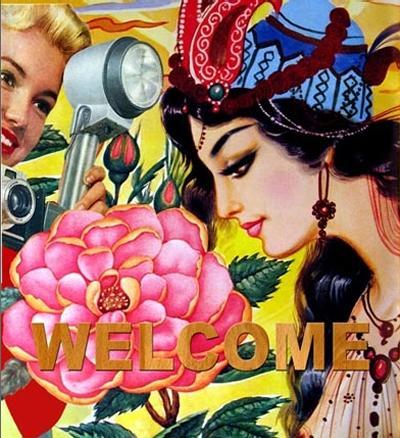Welcome
dal 3/3/2005 al 16/4/2005
Segnalato da
Farhad Moshiri
Bahram Afandizadeh
Mehdi Hosseinzadeh
Ebraheem Zinali Khamne
Farhad Moshiri
Peyman Hooshmanzadeh
Fereydoun Ave
Shirin Aliabadi
Farhad Moshiri
3/3/2005
Welcome
Kashya Hildebrand Gallery, New York
The show turns the art market on its head. Here, within the frame of an exhibition, the packaging tendencies associated with culture brokering and associated consumption are expressly addressed, and interrogated. Curator/artist Farhad Moshiri asks us to consider what it is that makes a work ethnic, traditional or even contemporary for that matter. Within the bounds of the works on display, the lines between kitsch, art and craft are impossibly blurred. Works by ten artists

Welcome turns the art market on its head. Here, within the frame of an exhibition, the packaging tendencies associated with culture brokering and associated consumption are expressly addressed, and finally, subtly interrogated. Curator/artist Farhad Moshiri asks us to consider what it is that makes a work ethnic, traditional or even contemporary for that matter. While his immediate point of departure is Iran, his exhibition raises questions as to labeling tendencies at large, finally destabilizing us, for we are all implicated in the reductionist games at hand. Within the bounds of the works on display, the lines between kitsch, art and craft are impossibly blurred.
Shirin Aliabadi co-opts the vernacular of car upholsterers who have long animated the interiors of transport trucks. Here, she references the tradition of the post card, engaging a local upholsterer to use images drawn from the largely European tradition of the greeting card to animate his work. Fruits, mosques (always labeled in a foreign French), countryside backdrops and the like—the content inevitably reveals something about our collective notions of the photogenic and their historical roots.
Fereydoun Ave’s collage-paintings reference local notions of heroism, here as manifest in the grand tradition of wrestling. Embedding newspaper cutouts of wrestling icons within bouquets of flowers creates stunning contradictions. Or does it? After all, haven’t the wrestlers entered the canon, as it were, much like the flower in the Western art historical tradition?
Peyman Hooshmanzadeh’s photographic series of belt buckles represents the non-portrait, the alternative to the traditional representation and the intersection of art and ethnography. Hooshmanzadeh’s photos, stubbornly resisting the complete view of the subjects he takes on, seem to be taunting us with their impossibly half-view.
Designers cum artists Michael and Hushi employ local second-hand materials to construct firmly contemporary fashion objects. A low-cut leather jacket and cowboy hat fashioned from materials taken from Tehran’s Friday market provide for an unlikely mingling of cultures, raising countless questions in the realm of appropriation, exotica and finally, the myths associated with fashion at large.
Farhad Moshiri’s photographs of Iranian home exteriors, wholly baroque and triumphantly gaudy, not only provide an insight into one set of prevailing values, but also create a confusion between medium and content. His often-clinical photographic approach seems at odds with the images within. In addition, his felt embroidery series, rendering traditional the contemporary, serves as a tangible extension of the photographs. Boom boxes, crystalline chandeliers and other fetishistic signifiers of wealth mark the shift in cultural codes.
Bahram Afandizadeh and Mehdi Hosseinzadeh engage occupy an ambiguous space. Both local photographers who fashion elaborate photomontages using an antiquated (read: budget) methodology, they exist as the ultimate precursors to the Photoshop generation, their iconography providing insights as to the potential for photography to be a tool in the construction of identities.
Like Bahram Afandizadeh and Mehdi Hosseinzadeh, Ebraheem Zinali Khamne is a pioneer of the vernacular language. His mandate, to create posters that represent the Iranian interior for commercial furniture shops, forces him to elaborate a novel iconographic language that is both traditional and modern. The results are dizzying, providing an insight as to the extreme poles he must negotiate.
Kashya Hildebrand Gallery
531 W. 25th St., New York, NY, 10001, USA
Gallery opening hours
Tuesday to Saturday from 11 a.m. to 6 p.m.
or by appointment



